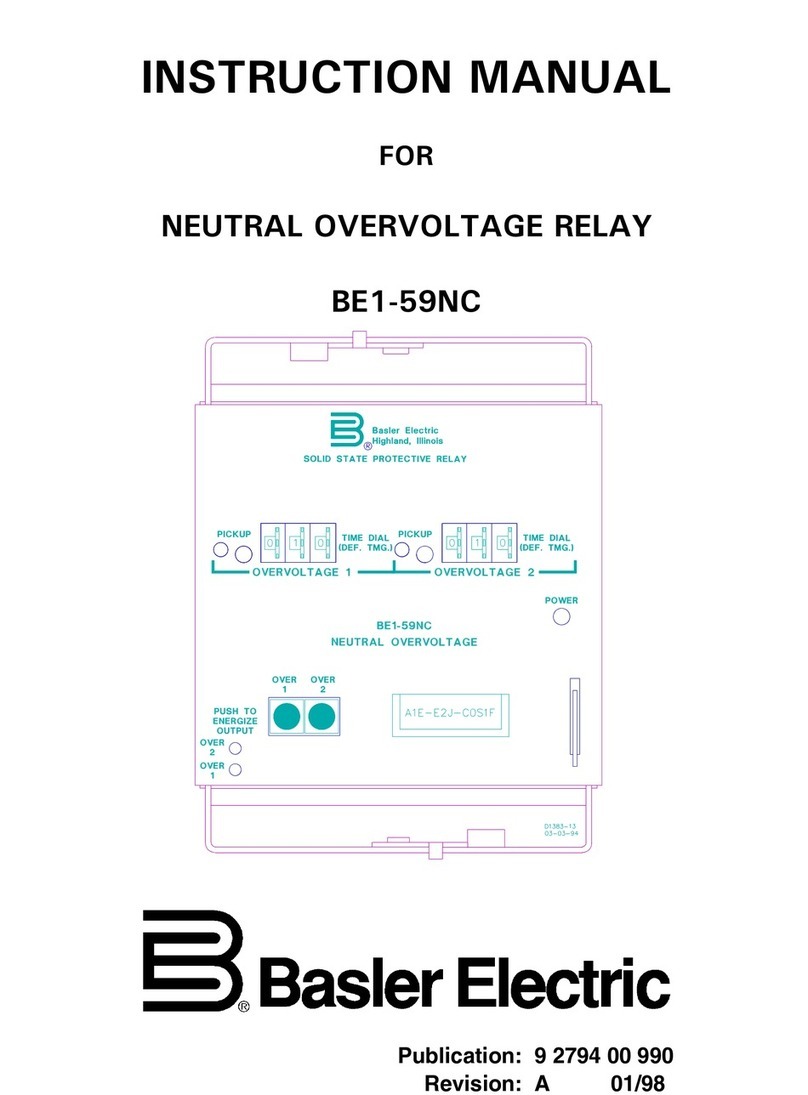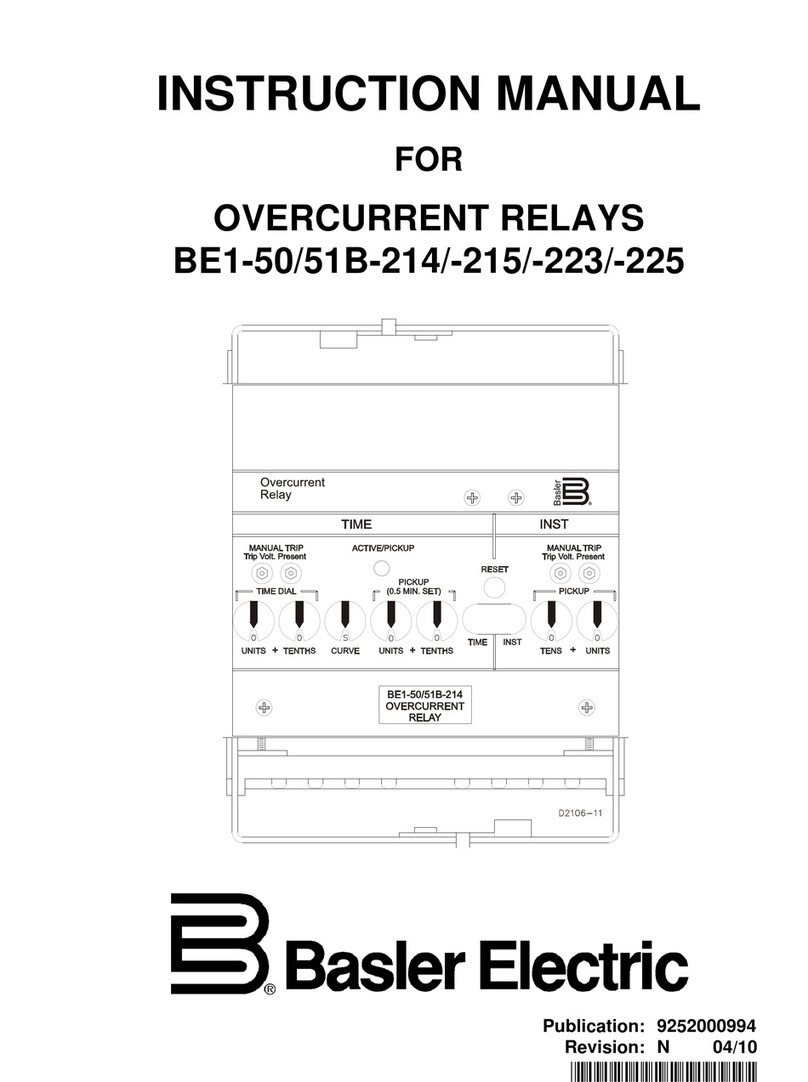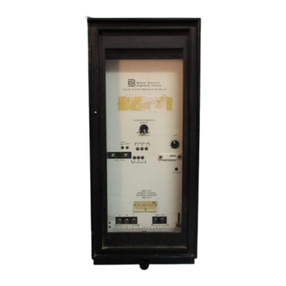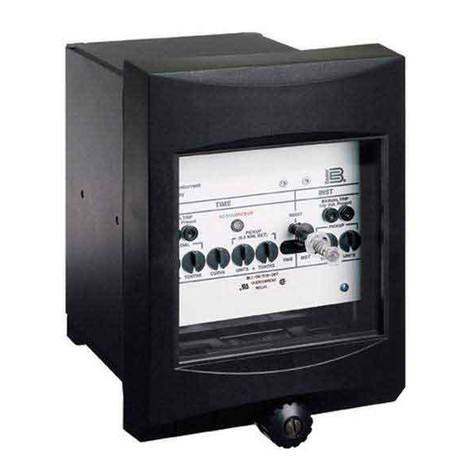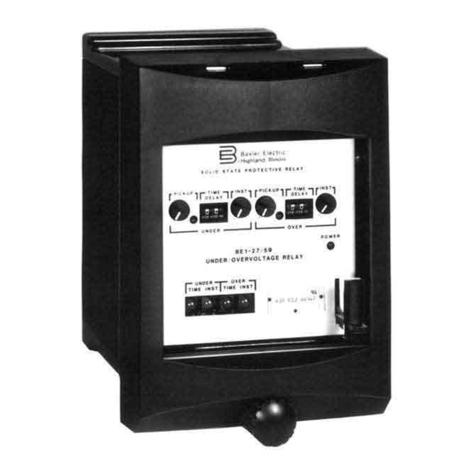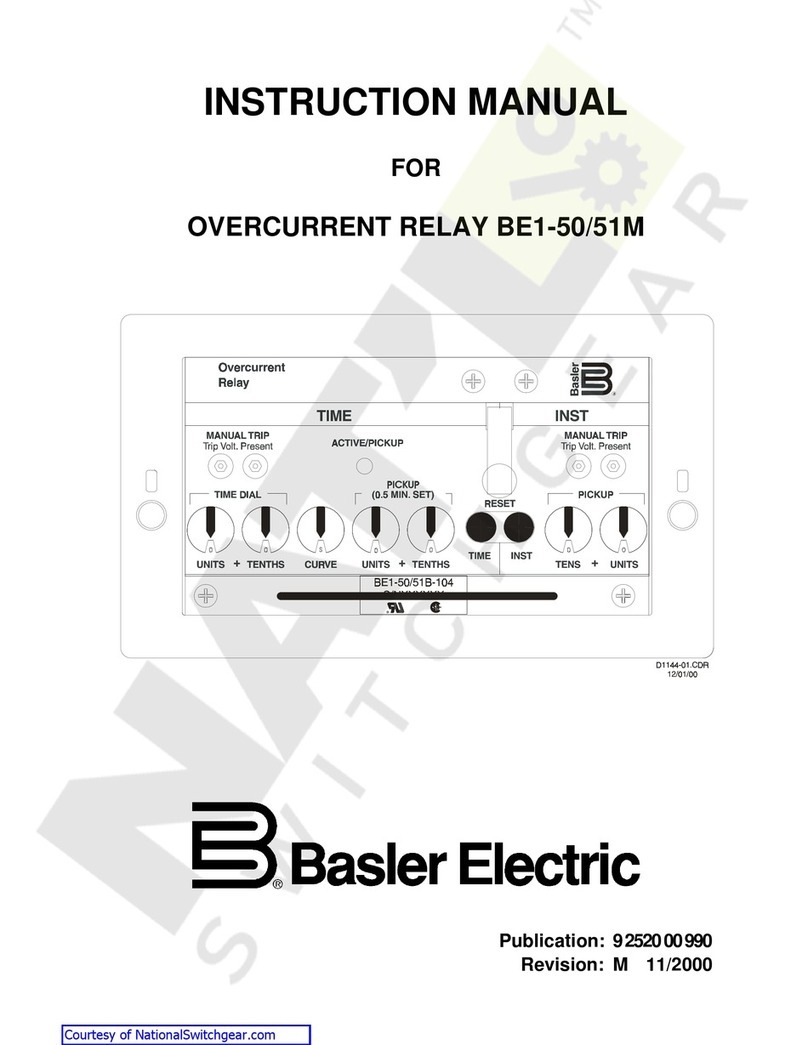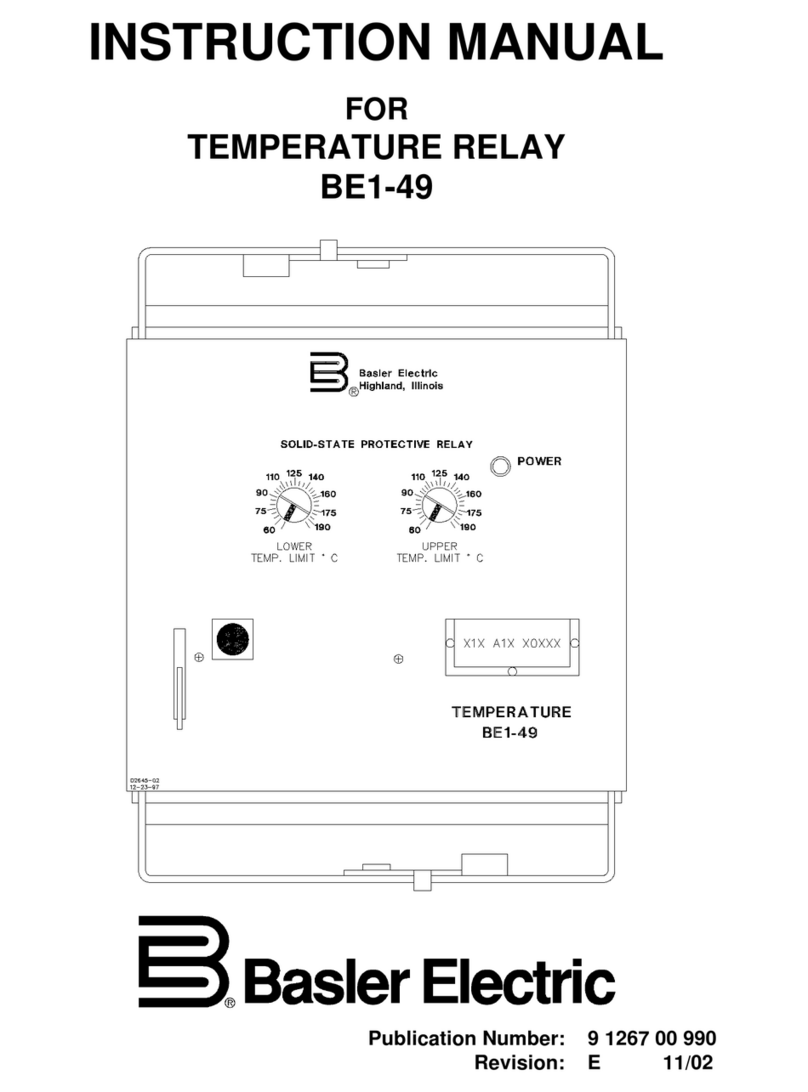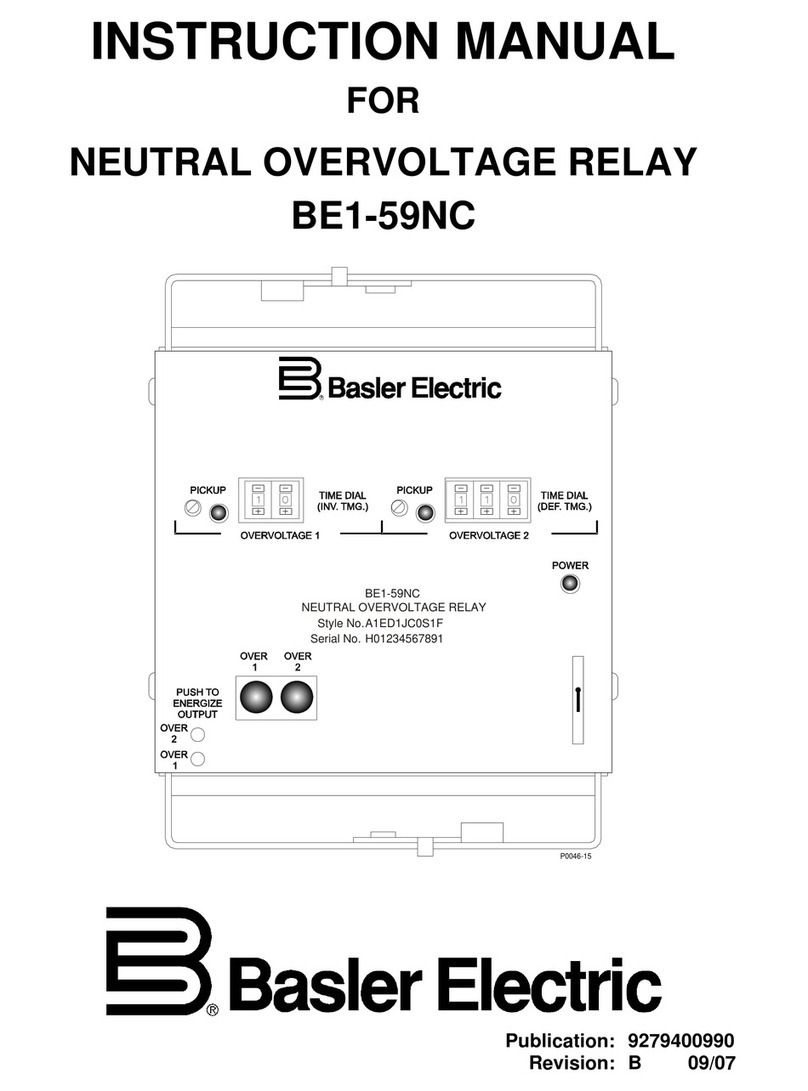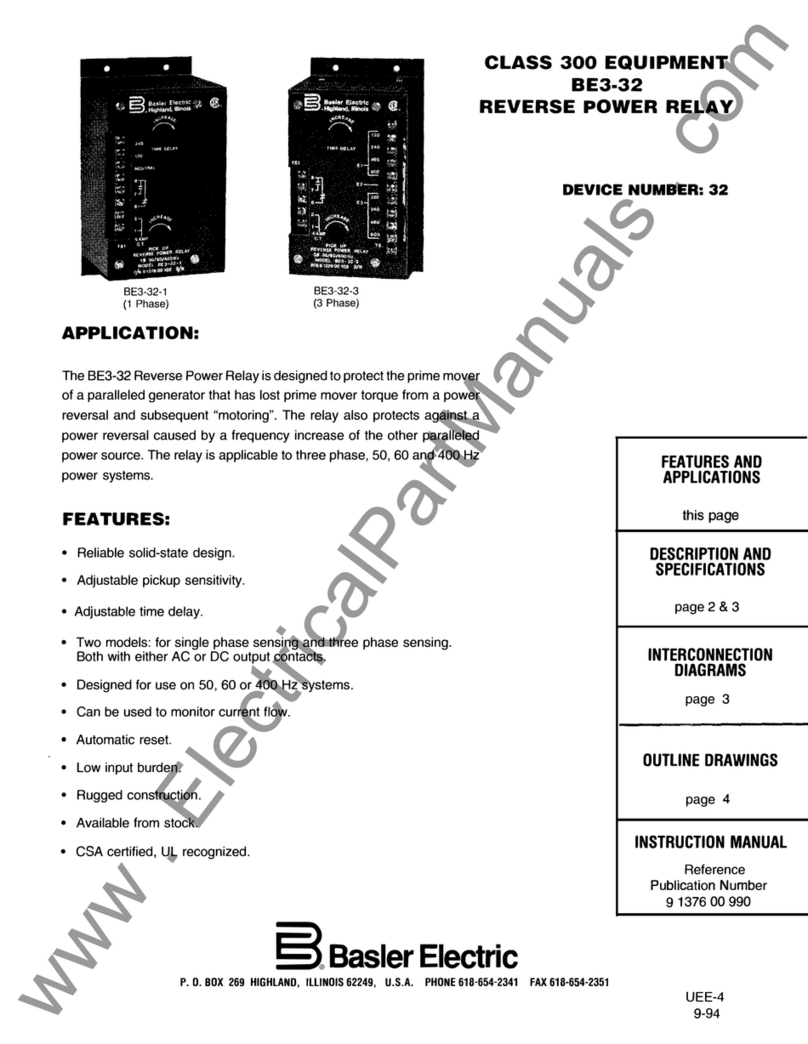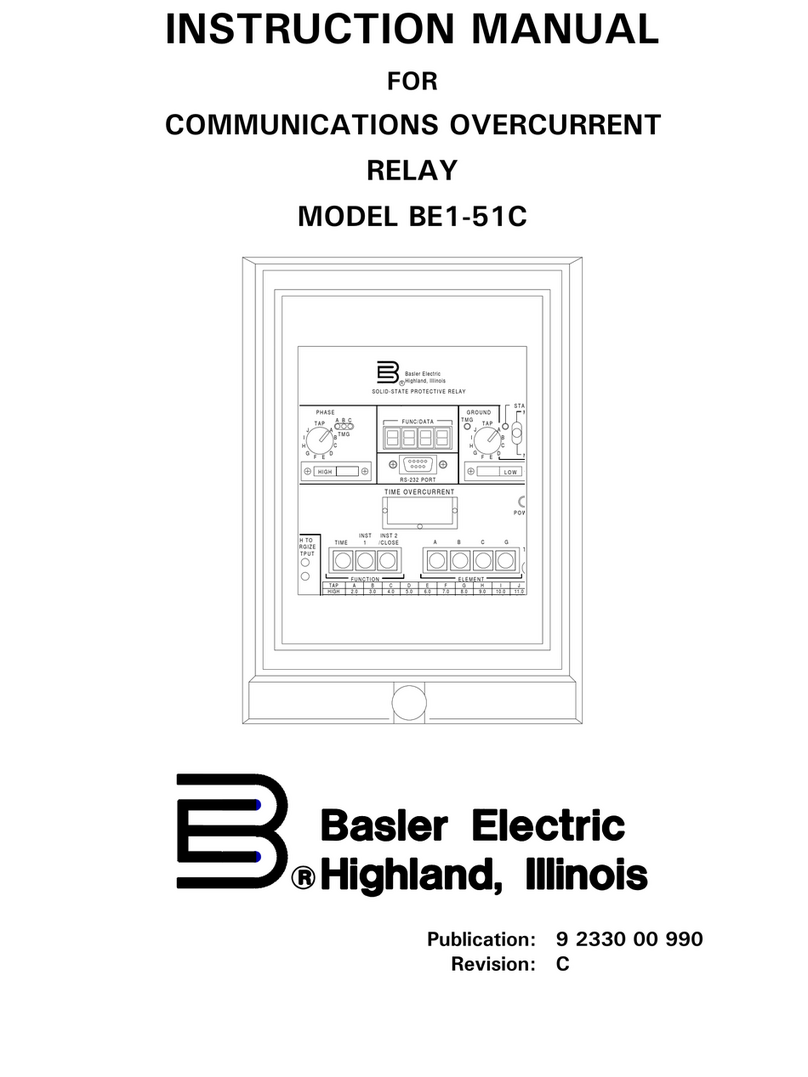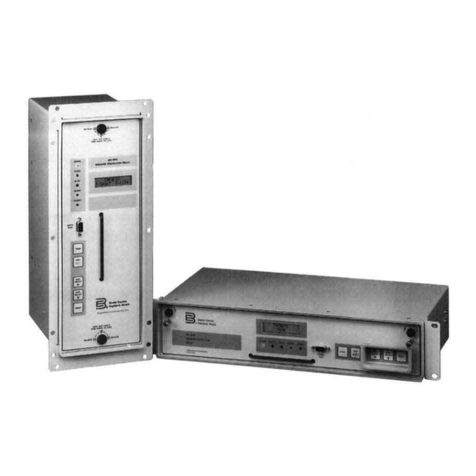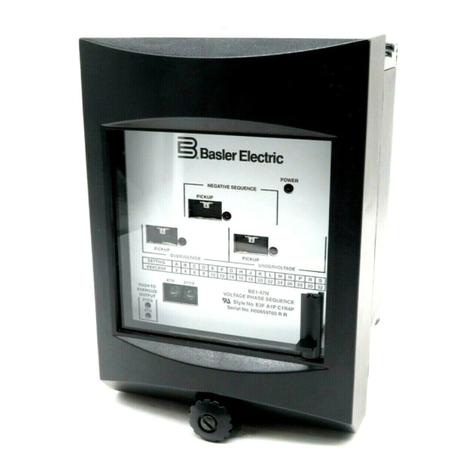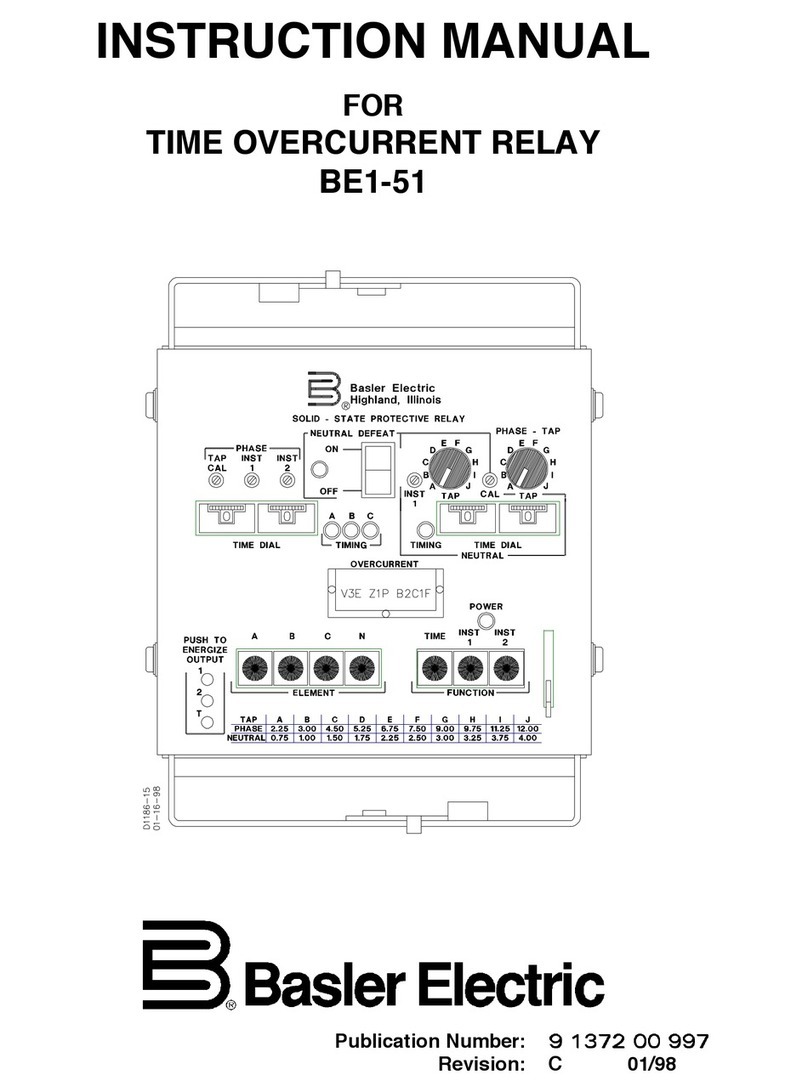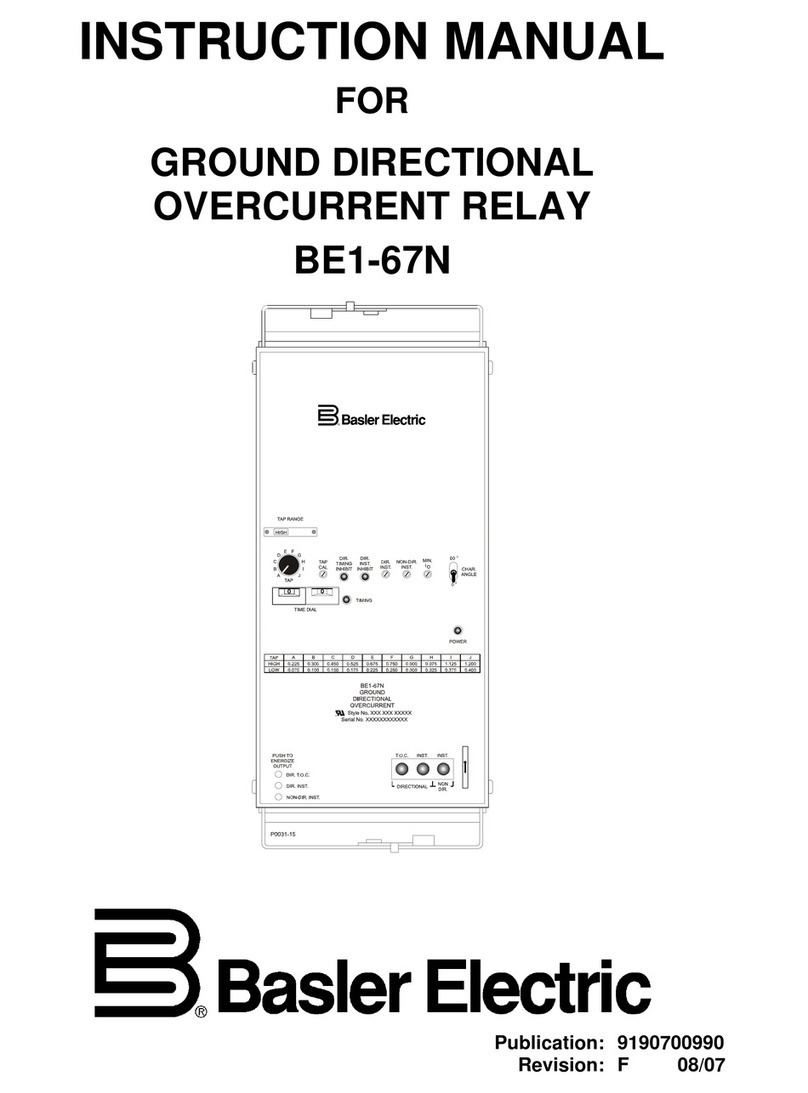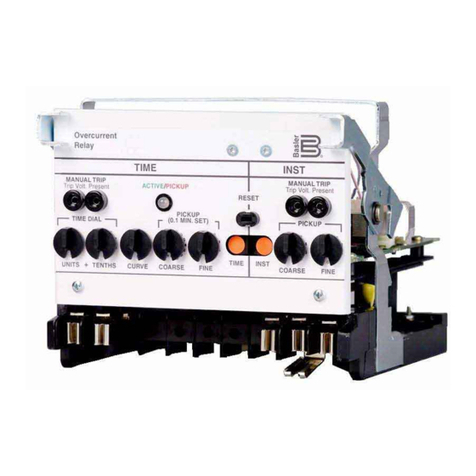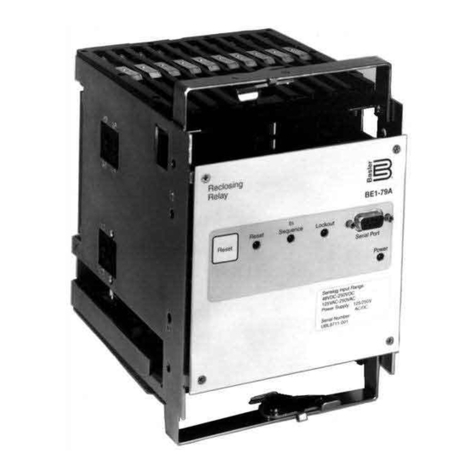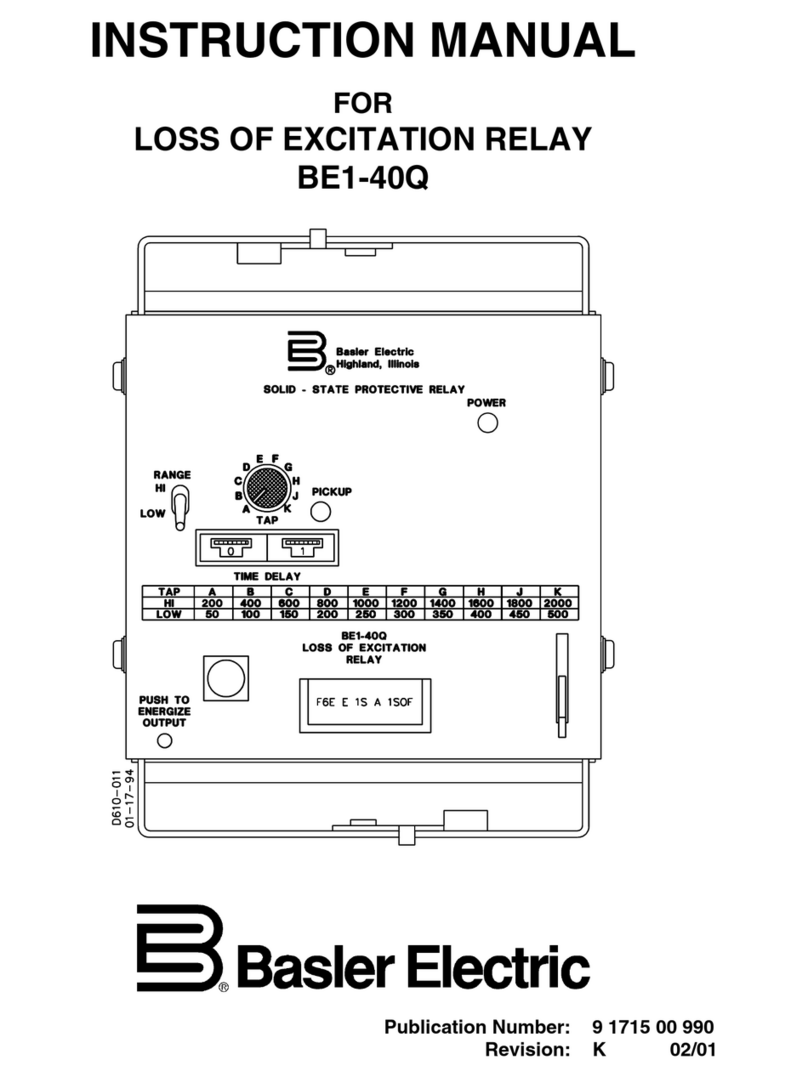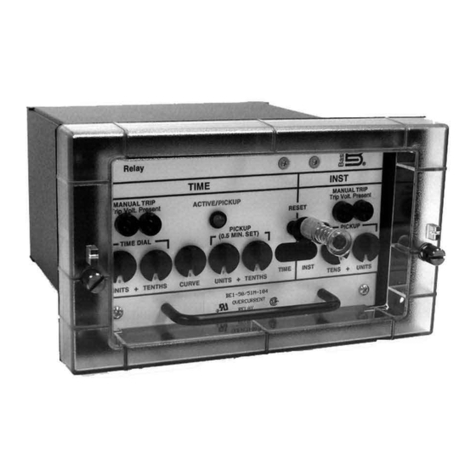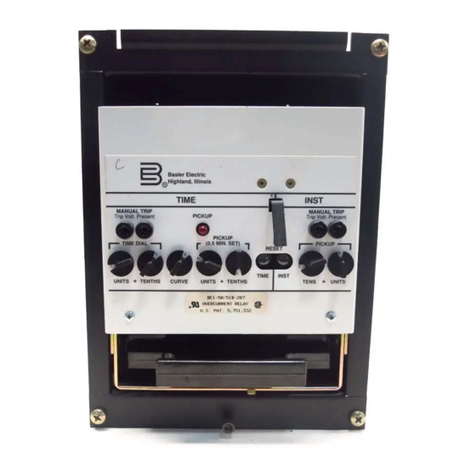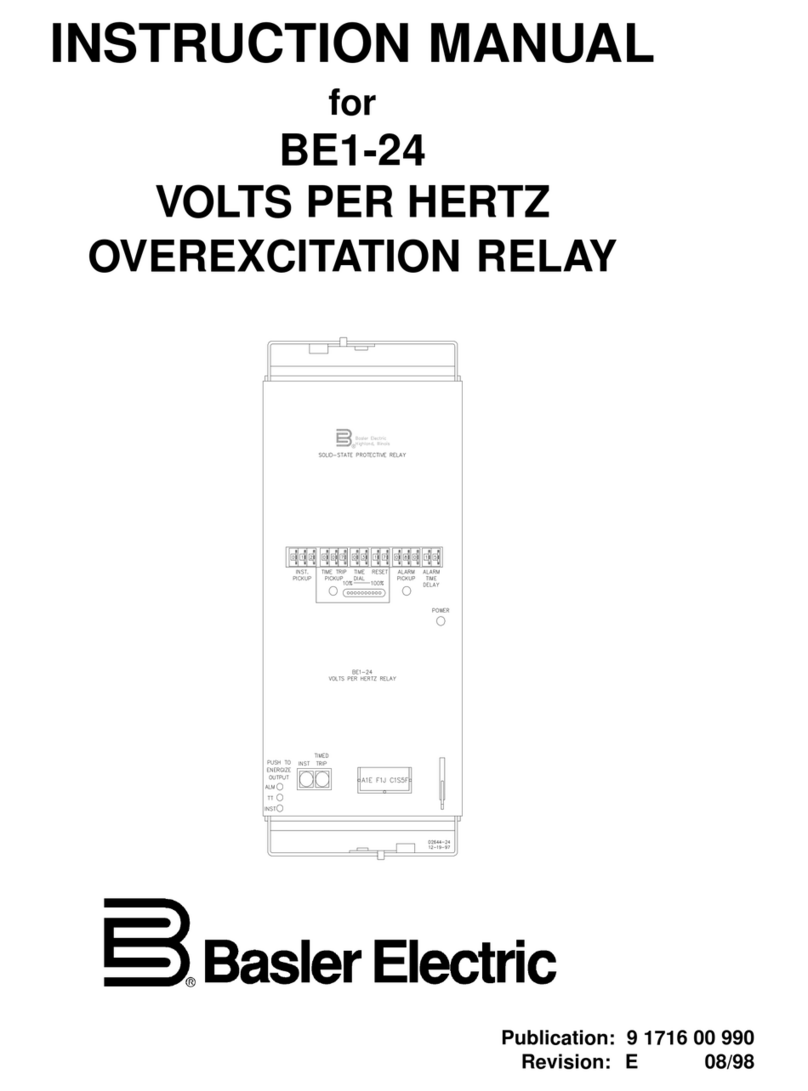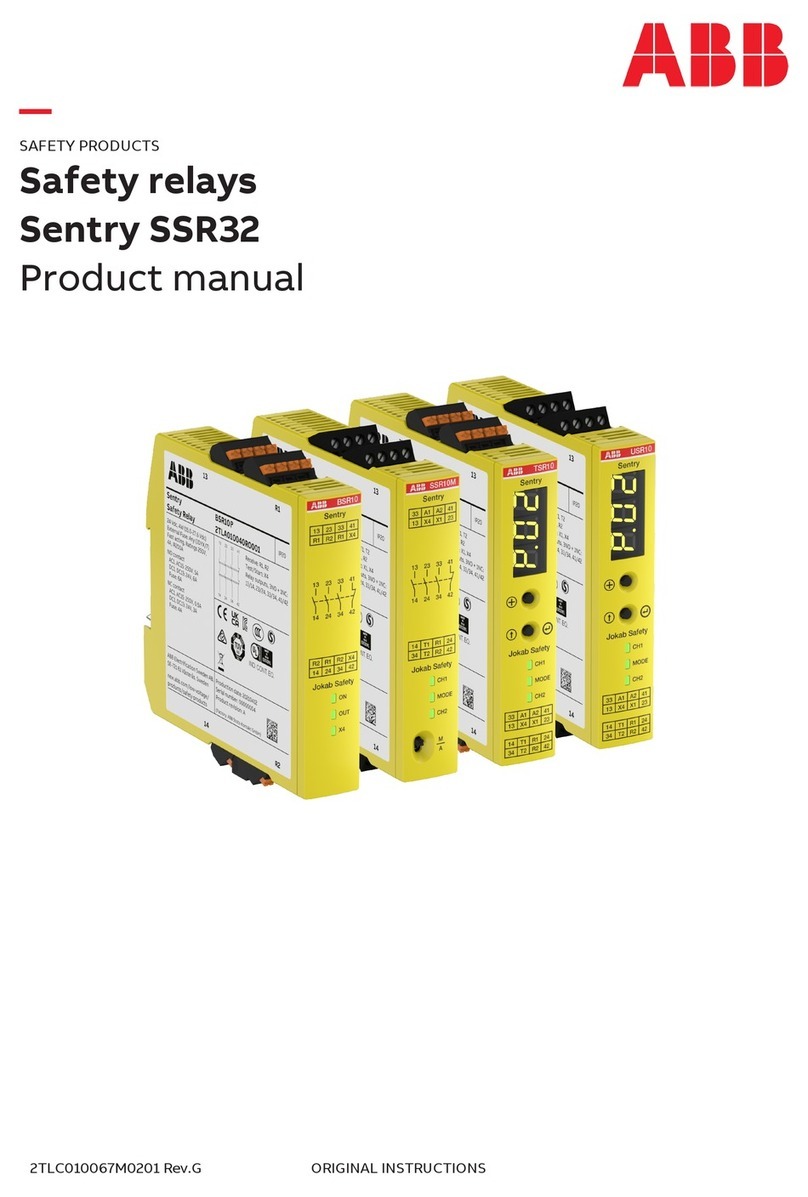
iii
CONTENTS
SECTION 1 GENERAL INFORMATION 1-1
Description ............................................. 1-1
Application ............................................. 1-1
General ............................................. 1-1
Load Demand Curve .................................. 1-2
Specifications ........................................... 1-3
Characteristic Curves ..................................... 1-8
SECTION 2 CONTROLS AND INDICATORS 2-1
SECTION 3 FUNCTIONAL DESCRIPTION 3-1
General ................................................ 3-1
Functional Description .................................... 3-1
Sensing Input ........................................ 3-1
Power Supply ........................................ 3-1
Instantaneous Signal .................................. 3-1
Time Signal ......................................... 3-1
Microprocessor ....................................... 3-1
Power-Off Sensing .................................... 3-2
Outputs ............................................. 3-2
SECTION 4 INSTALLATION 4-1
General ................................................ 4-1
Dielectric Test ........................................... 4-1
Mounting ............................................... 4-1
Outline Dimensions ....................................... 4-2
Panel Drilling Diagram, C1 Case ............................ 4-3
Connections ............................................ 4-4
AC Input Connections .................................. 4-4
DC Control Connections ................................ 4-5
BE1-50/51M-222 Overcurrent Relay, Rear View ................ 4-6
SECTION 5 TESTING 5-1
General ................................................ 5-1
Dielectric Test ........................................... 5-1
Operational Test Procedure ................................ 5-1
Test Equipment Required ............................... 5-1
Pickup and Timing Test Setup ........................... 5-2
Target Operational Test Setup ........................... 5-2
Test Procedure ....................................... 5-3
Setting the Relay ........................................ 5-6
Periodic Tests ........................................... 5-6
General ............................................. 5-6
Periodic Test ........................................ 5-6
